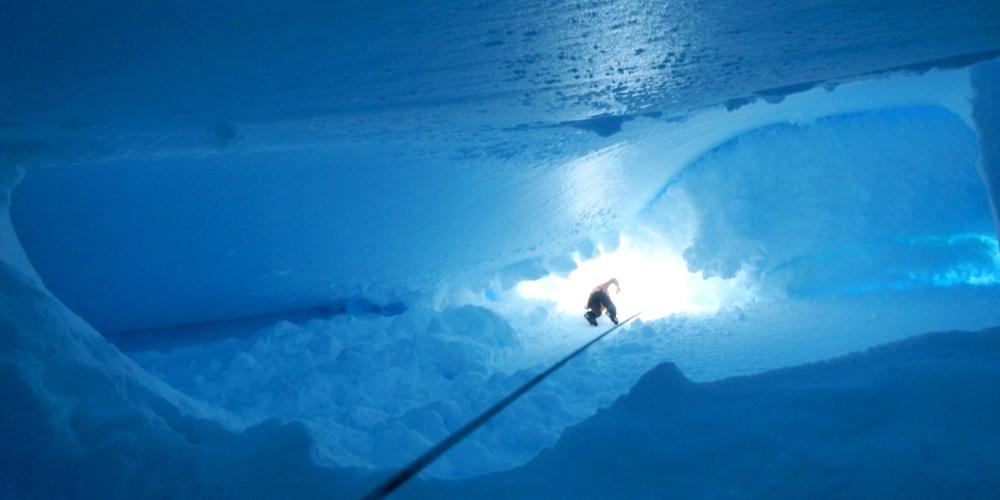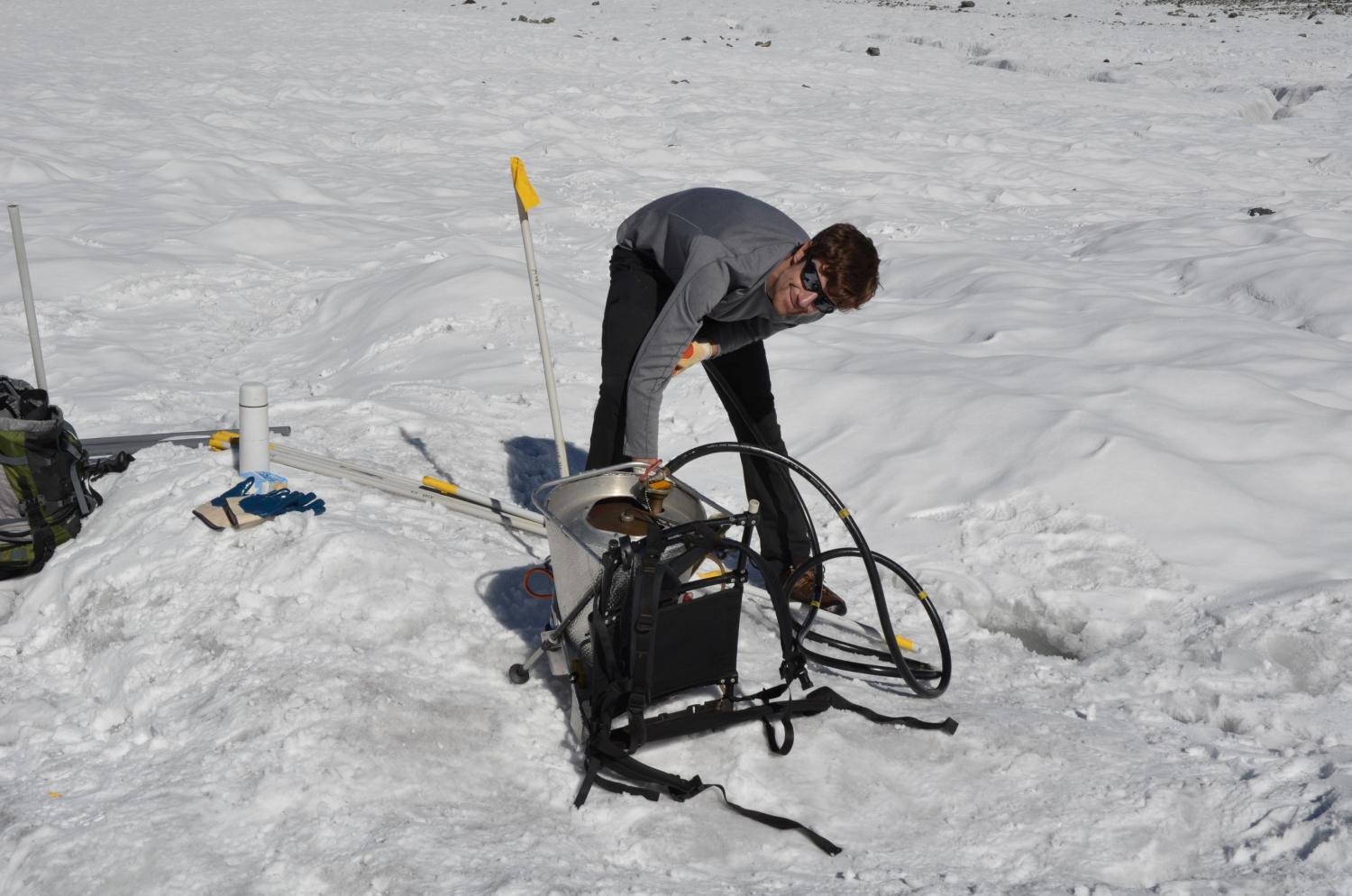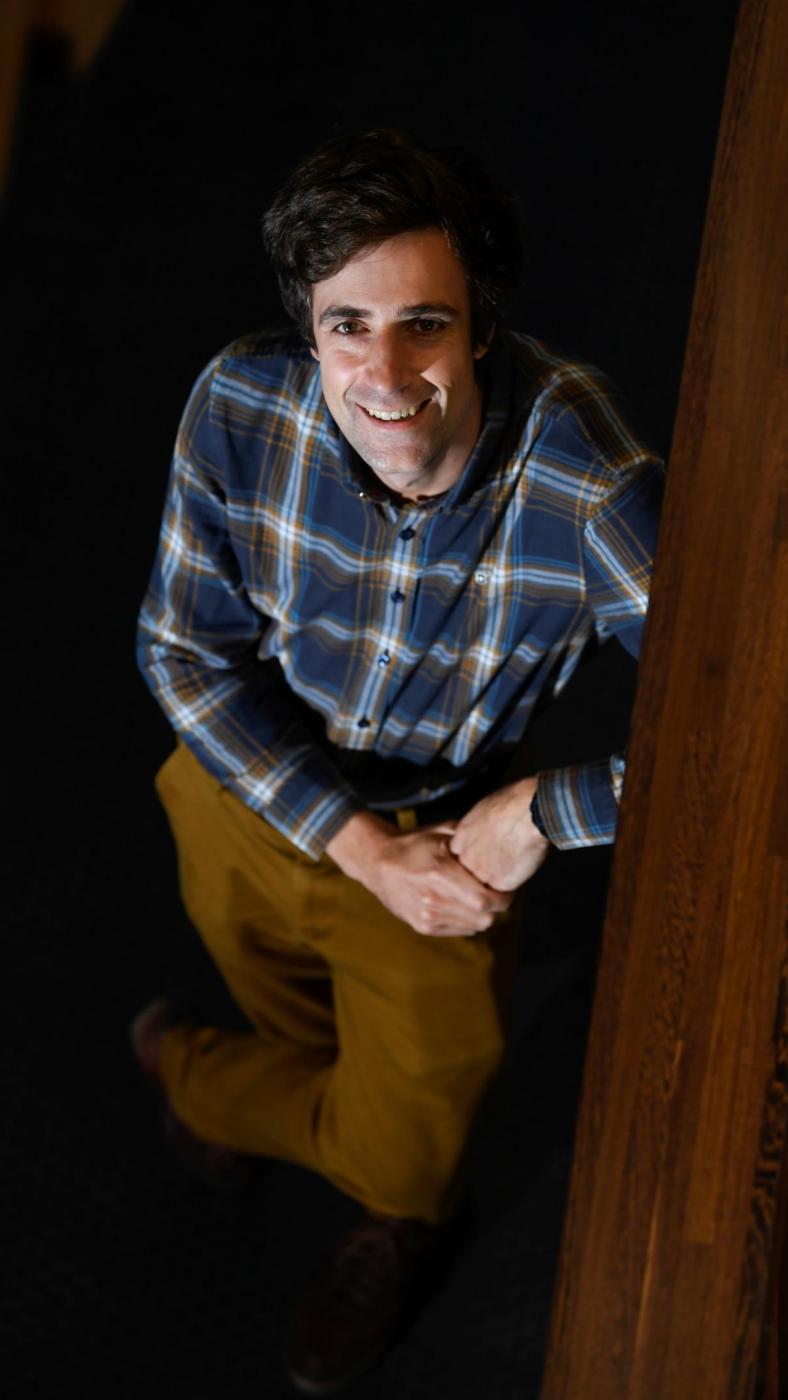
Earth’s 200,000 glaciers are melting. But how fast? That is the research area of Professor Harry Zekollari of the VUB’s Department of Water and Climate. With a European Research Council grant and an Odysseus grant from the Research Foundation – Flanders, he set up a team of a dozen glaciologists. “We want to further refine existing models to better predict glacier evolution,” he says.
In the Swiss Alps last winter, there was exceptionally heavily snowfall, between 3 and 6m thick. That was a boost for local glaciers, as 2022 and 2023 had been disastrous years. Dry winters and subsequent hot summers meant that as much as 10% of their mass was lost in two years. With luck – meaning a not too hot or dry summer – they will shrink only a little or not at all in 2024, for the first time in 23 years. Harry Zekollari tempers the joy. “One good year is not a trend reversal: glaciers continue to shrink worldwide. This is not happening at the same rate everywhere. The 4,000 glaciers in the European Alps, for example, are more sensitive to global warming. They are shrinking faster than elsewhere. In the Andes, Asia or Alaska, glaciers are often larger and higher or cooler. As a result, they react more slowly and are somewhat better protected in the short term.”
What does their future look like?
Harry Zekollari: “In the best scenario, we follow the Paris Agreement and global warming is limited to 1.5 to 2° C. Then a quarter of the global glacier mass melts by 2100. If we don’t, half of it will disappear. Europe will be hardest hit. In that bad scenario, we will lose 90% of the glacier mass in the Alps by the end of this century.”
What are the consequences in Europe?
“Unique ecosystems lose their habitat and cultural and tourist heritage is lost. Climate change also increases the likelihood of glaciers suddenly breaking up. Two years ago in South Tyrol in Italy, a section of the Marmolada glacier broke off, causing deaths and injuries. There is also an impact on electricity production. Switzerland generates half of its electricity with water dams and these depend on glaciers for their water supply. An electricity company does not want to invest tens of millions in a dam when the water supply will dry up in 50 years.”
“The Indus Valley is densely populated and heavily dependent on glacier water”
Elsewhere in the world, the problems are even bigger, aren’t they?
“Much bigger. Tragically, the countries that have contributed the least to climate change are often hit the hardest. The Indus Valley is in the worst shape. Very many people live there, who rely heavily on glaciers for their water supply. A healthy glacier always gets a little bigger in winter and a little smaller in summer, because part of it melts and flows into the valley via rivers. That’s great, because in summer extra water is needed there, for drinking water, agriculture, etc. Those glaciers act as a natural water reservoir... until they disappear.”

What future scenario do you see there?
“In the next few decades, there will be more water flowing into the valley in the summers, because the glaciers are currently melting at an accelerated rate. Our models predict the peak in water discharge sometime between 2040 and 2070. After that, the water inflow will decrease rapidly and the problems start. That will be a big challenge.”
Hundreds of thousands of melting glaciers: doesn’t that make sea levels rise?
“Currently, sea levels are rising by 4mm a year. Just over 1mm is due to melting glaciers. That’s a lot, because glaciers are reacting quickly to climate change. The ice sheets at the poles may eventually contribute much more to sea level rise, but they react more slowly – we are not talking decades, but centuries.”
“It will cost a lot of money to protect our coastal and port infrastructure”
What would happen if all the world’s glaciers melted?
“Then sea levels would rise by 30cm, which is problematic, especially when combined with other elements that contribute to sea level rise. It will cost a lot of money to protect our coastal and port infrastructure.”
Where do the predictions that glaciologists make come from?
“We use computer models for that – virtual glaciers, so to speak. These are of course fed by real observations, but we incorporate laws from mathematics and physics. So we try to describe how the ice flows, how much glaciers grow when snow falls on them, how much they shrink when it gets warmer, how fast they melt... with very concrete figures. This research has gained momentum in the last five to 10 years, as we have more and more satellite observations. Even if you don’t physically visit the glaciers, you can learn a lot about them these days. Moreover, with AI and algorithms, we can also process all that data faster and faster.”
What is your research group’s ambition?
“To make our models even better. The more reliable the models, the more convincingly we can predict the future.”
“With the ERC grant and the Odysseus grant, we are funding an international research group of glaciologists”

How did a kid from Brussels become fascinated by glaciers?
“I lived in Italy from the age of two to 14, near Lake Maggiore. Teenagers in Belgium join a football club, I was a member of a ski club. Hence my affinity with the mountains. When I had to choose a field of study, I first thought of mathematics or physics. It became geography, because you can apply mathematics and physics to Earth systems. Through Professor Philippe Huybrechts, I then came into contact with glacier research and modelling.”
You recently won two prestigious grants. Congratulations! What will they allow you to do?
“Thank you. The European Research Council Starting Grant is a grant that allows starting scientists to set up their own research group, and is worth €1.5 million for a five-year period. I am honoured because these ERC grants are a competitive affair. I spent much of my postdoc at ETH University in Zurich, working hard on a new glacier model and trying to share this science with colleagues through scientific publications as much as possible. In addition to the ERC grant, I recently received €1 million through an Odysseus grant from the Research Foundation – Flanders. With these two grants together, we are now funding a new international and diverse research group with glaciologists from Belgium, the Netherlands, France, Chile... We will learn a lot about glaciers and their future in the coming years.”
The world needs you
This initiative is part of VUB's public programme, a programme for everyone who believes that scientific knowledge, critical thinking and dialogue are an important first step to create impact in the world.
As an Urban Engaged University, VUB aims to be a driver of change in the world. With our academic edcuational programmes and innovative research, we contribute to the Sustainable Development Goals of the United Nations and to making a difference locally and globally.